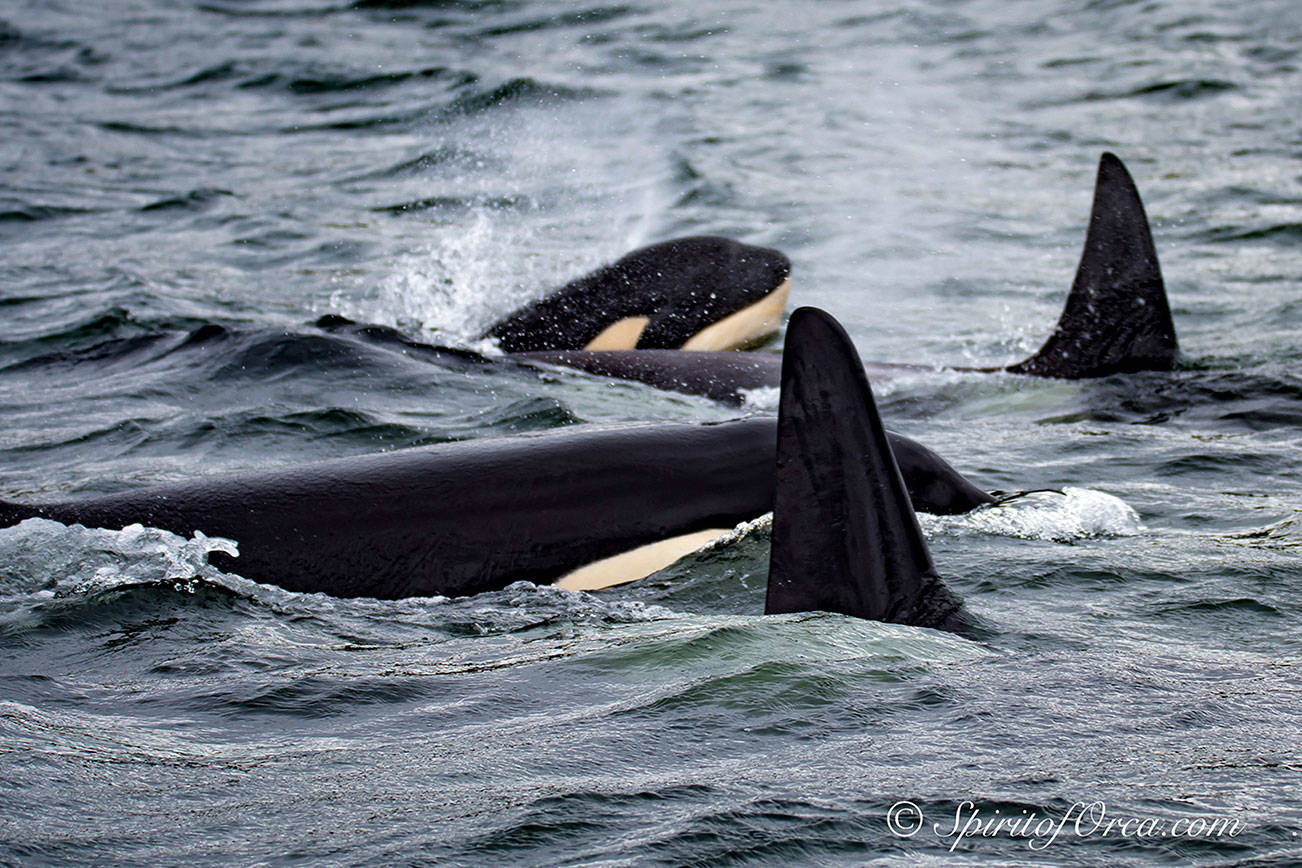by Sorrel North
Lopez Island resident
Lopez Island orca advocacy group, Southern Resident Protection, has launched a campaign to put an initiative on the 2019 ballot. The San Juan County Orca Protection Initiative will amend the expired San Juan County Watercraft Regulations, increasing distance requirements between vessels and Southern Resident Killer Whales (SRKW) to 650 yards in San Juan County waters.
The critically endangered SRKW population stands at 75 whales, with 25 females of reproductive age, only 18 of which have produced calves in the last 24 years. Lack of Chinook salmon has been identified as the gravest threat to the SRKW’s survival. Campaign organizers believe the status of the SRKW population is so poor they need immediate measures to help them hunt what prey exists in the Salish Sea. Increasing distance regulations to 650 yards will give the starving whales greater foraging success in their core feeding habitat in San Juan County waters while other, longer term solutions (such as breaching dams) are being pursued.
In 2008, the National Oceanic and Atmospheric Administration conducted a comprehensive review of how sound effects the SRKWs. The study estimated that under completely quiet ocean conditions, the farthest away a killer whale at the surface could detect a Chinook salmon at 65 meters depth was 650 meters away (1 meter = 1.09 yards). Vessel noise closer than 650 meters (or yards) shrinks the area in which the SRKWs can detect salmon. Based on modeling results, moving the vessel approach limit out to 650 yards is the best way to provide the whales access to salmon in their historical feeding grounds.
Multiple scientific studies have concluded that vessel noise and disturbance is a primary factor in the demise of the SRKW population. Vessel noise masks the sounds that the SRKWs depend on for echolocating prey and communicating. Other impacts include increased time traveling and more frequent changes in behavior. These behavioral changes have important energetic consequences and are a serious threat to the SRKW’s health and ability to reproduce and survive.
Although vessel speed has been determined to be a primary factor, even disengaged engines create significant acoustic interference. Interactions between vessels and the SRKWs peak in July and August, a crucial feeding period. Dozens of commercial and recreational vessels follow and/or surround the SRKWs an average of 12 hours per day from May—September while they forage for salmon in their core habitat.
San Juan County has been the Southern Resident orca’s ancestral home waters for thousands of years. In less than 150 years, human activities have driven these whales to the brink of extinction. County residents have an opportunity to do what elected officials have not done, and provide immediate relief from the stress of underwater vessel noise and disturbance. Quiet waters equal better fishing opportunities.
Initiative petition forms and informative brochures will be available at various locations on Lopez, Orcas, Shaw and San Juan Islands. For more information and links to multiple studies on the impacts of vessel noise on the Southern Resident orca whales, visit www.southernresidentprotection.org.




